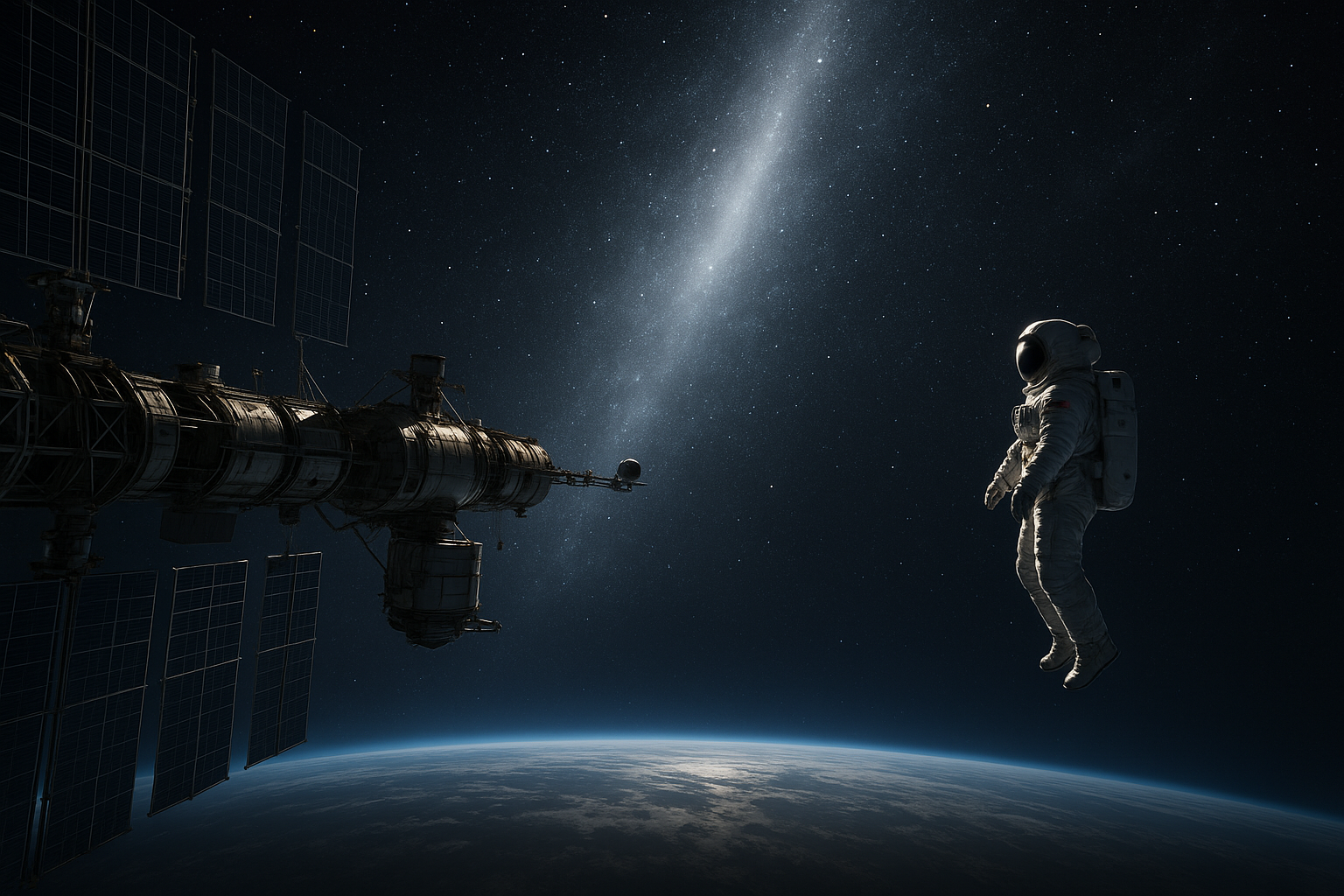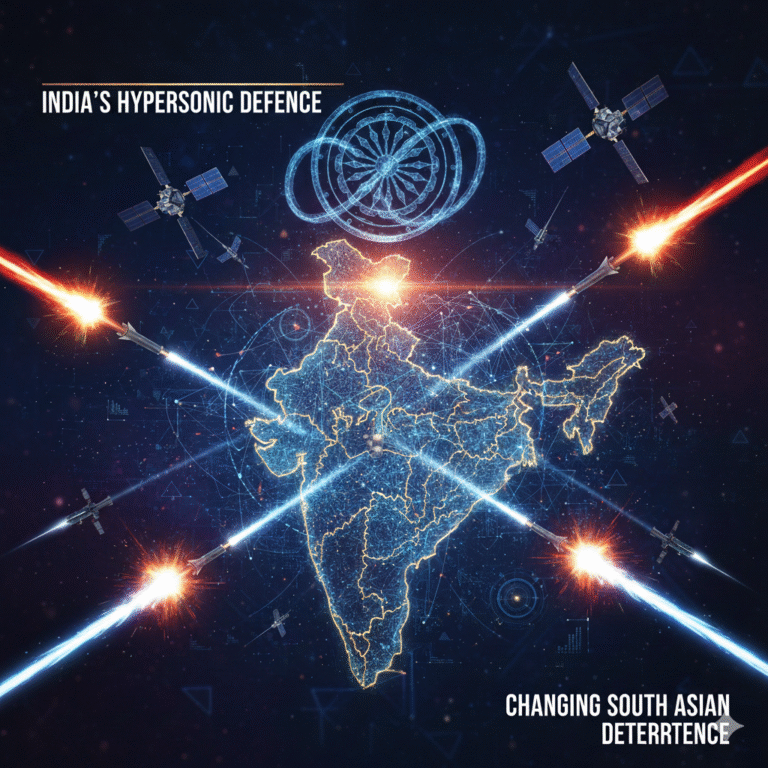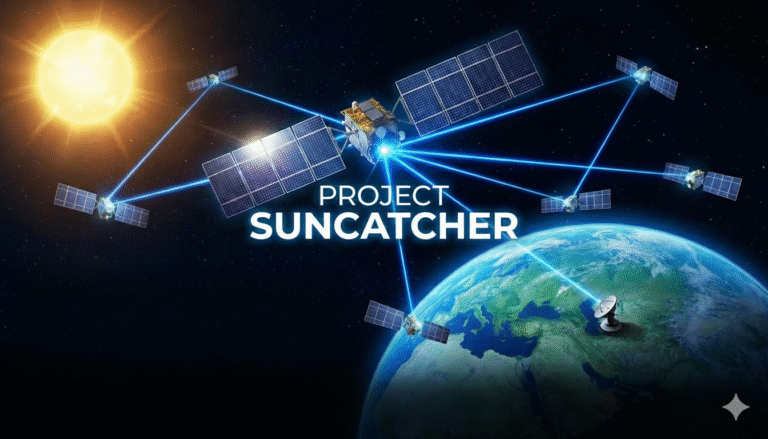Key Highlights
- Zodiacal light from interplanetary dust creates faint white glow in space nights, with over 85% of particles originating from Jupiter-family comets
- Absence of atmospheric scattering eliminates gradual sunrise/sunset transitions, creating abrupt shifts between sunlight and Earth shadow
- Gegenschein phenomenon produces counterglow at antisolar point through backscattering, appearing 8-10 degrees across with enhanced brightness
- Human visual adaptation amplifies faint light while 90-minute ISS orbital cycle disrupts natural circadian rhythms with 16 sunrises daily
- Space cameras integrate multiple sources over long exposures, creating white background effects that challenge deep space astronomical imaging
When we gaze up at the night sky from Earth, we experience the familiar darkness punctuated by stars, moonlight, and occasional artificial illumination. However, astronauts aboard the International Space Station (ISS) and other spacecraft report a dramatically different experience: nights in space often appear whitish or faintly glowing rather than the pitch black we might expect. This counterintuitive phenomenon challenges our Earth-centric understanding of darkness and reveals the complex interplay of cosmic dust, scattered sunlight, and human perception in the vast expanse of space. The explanation lies in the absence of Earth’s atmospheric filtering, the presence of interplanetary dust particles creating zodiacal light, and the unique visual conditions that exist beyond our planet’s protective atmospheric envelope.
The Science Behind Space’s White Nights
Absence of Atmospheric Scattering: No Gradual Transitions

On Earth, our experience of day transitioning to night is mediated by atmospheric scattering, particularly Rayleigh scattering, which creates the familiar blue daytime sky and colorful sunrises and sunsets. This atmospheric filter creates gradual transitions between light and dark, giving us the sharp contrast between day and night that defines our terrestrial experience. ntrs.nasa
Earth’s Atmospheric Effects:
- Rayleigh scattering: Blue light scattered more than red light, creating blue skies
- Mie scattering: Larger particles creating orange and red sunset colors
- Atmospheric refraction: Bending light to create gradual twilight periods
- Absorption: Filtering certain wavelengths of sunlight
Space Reality:
In space, without a thick atmosphere, transitions between sunlight and shadow are abrupt and stark. There are no gradual sunrises or sunsets – spacecraft either experience full illumination or complete Earth shadow. This absence of atmospheric mediation fundamentally alters the visual environment and contributes to the unexpected brightness during what would be considered “nighttime” periods.
Zodiacal Light: The Cosmic Dust Illumination
The primary contributor to space’s white nights is the zodiacal light, a phenomenon caused by sunlight scattering off interplanetary dust particles distributed throughout the solar system. This faint, diffuse glow extends along the ecliptic plane and contributes significantly to the background illumination of space.
Zodiacal Light Characteristics:
- Composition: 10-300 micrometer particles ranging from one nanogram to tens of micrograms
- Distribution: Lens-shaped cloud centered on the Sun, extending beyond Earth’s orbit
- Density: If composed of 1mm particles with Moon-like albedo, each would be 8 kilometers from its neighbors
- Source: Over 85% originates from Jupiter-family comets, not asteroids as previously thought space
Scientific Discovery:
Recent research by David Nesvorny and Peter Jenniskens revealed that the zodiacal dust cloud primarily originates from short-period comets whose orbits are modified by Jupiter’s gravitational influence. This discovery overturned previous assumptions that asteroids were the primary source of interplanetary dust.
Gegenschein: The Counterglow Phenomenon
A related phenomenon contributing to space illumination is the gegenschein or “counterglow” – a faint bright spot visible at the antisolar point (directly opposite the Sun). This backscattering effect occurs when sunlight reflects off interplanetary dust particles at full phase, creating an enhanced brightness zone within the broader zodiacal light band.
Gegenschein Properties:
- Size: 8-10 degrees across in the sky
- Brightness: Apparent magnitude +5 to +6 with surface brightness in the +10 to +12 magnitude range
- Location: Directly opposite the Sun as viewed from any point in space
- Visibility: Best observed during specific months when not obscured by the Milky Way
Historical Context:
The gegenschein’s discovery has been historically debated, with Theodor Brorsen (1854) traditionally credited, though recent research by Donald Olson (2021) suggests earlier observations may have been misidentified auroral events. Alexander von Humboldt’s 1803 observation during his South American journey may represent the first authentic gegenschein recording.
Reflections and Secondary Light Sources
Earthshine and Planetary Reflections
Space environments receive significant illumination from reflected sunlight off various celestial bodies, particularly Earth, which acts as a massive reflector for nearby spacecraft and astronauts.
Earth Reflection Contributions:
- Earthshine: Sunlight reflected from Earth’s surface and clouds illuminating nearby objects
- Atmospheric glow: Airglow phenomena visible from space during “nighttime” passes
- City lights: Artificial illumination from populated areas visible during orbital night passes
- Lunar reflection: Moonlight contributing additional diffuse illumination
Spacecraft and Satellite Reflections
Artificial Light Sources:
- Spacecraft surfaces: Metallic and reflective materials on satellites and stations
- Solar panel reflections: Photovoltaic arrays reflecting sunlight
- Antenna and equipment: Various spacecraft components acting as secondary reflectors
- Debris reflections: Space debris contributing to scattered light
Human Vision Adaptation in Space
Physiological Response to Low Light
Human visual system adaptation plays a crucial role in perceiving the whitish glow of space nights. The eye’s rod and cone cells adapt to low-light conditions, amplifying faint scattered light that would be imperceptible under normal Earth conditions.
Visual Adaptation Mechanisms:
- Pupil dilation: Maximizing light intake in low-light conditions
- Rod cell sensitivity: Enhanced perception of faint light sources
- Dark adaptation: 30-45 minute process maximizing low-light vision
- Contrast enhancement: Brain processing amplifying subtle brightness differences
Circadian Rhythm Disruption
Space lighting conditions significantly impact astronaut circadian rhythms, as the natural 24-hour light-dark cycle is replaced by a 90-minute orbital cycle with complex interactions between artificial lighting and external illumination sources.
Circadian Impact Factors:
- 90-minute orbital cycle: 16 sunrises and sunsets per 24-hour period on ISS
- Artificial lighting: Scheduled light-dark cycles using spacecraft lighting systems
- Window shade management: Controlling external light exposure during rest periods
- Melatonin disruption: Sleep hormone regulation affected by irregular light exposure
Research Findings:
Studies on astronaut sleep patterns reveal that circadian phase occurs outside the sleep episode 19% of the time during spaceflight, indicating significant rhythm disruption compared to Earth-based sleep cycles. This disruption contributes to the altered perception of light and darkness in space environments.
Instrumentation and Long Exposure Effects
Camera and Sensor Integration
Space cameras and instruments using long exposure times integrate multiple faint light sources over extended periods, creating the white background effect often observed in space photography.
Technical Factors:
- Extended integration times: Accumulating photons from faint sources over minutes or hours
- Sensor sensitivity: CCD and CMOS detectors more sensitive than human vision
- Background subtraction: Difficulty separating cosmic sources from instrumental noise
- Dynamic range: Camera limitations in capturing extreme light contrasts
Implications for Space Exploration and Astronomy
Deep Space Imaging Challenges
Background illumination from zodiacal light and other sources creates significant challenges for astronomical observations from space-based telescopes.
Observational Impacts:
- Background noise: Faint sources competing with astronomical targets
- Telescope shielding: Specialized baffles and shields required for deep space imaging
- Image processing: Sophisticated algorithms needed to separate cosmic signals from background
- Mission planning: Orbital positioning to minimize scattered light interference
Human Spaceflight Considerations
Visual cue differences in space environments may affect astronaut performance and psychological well-being during long-duration missions.
Operational Concerns:
- Spatial orientation: Altered visual references affecting navigation and coordination
- Sleep quality: Disrupted circadian rhythms impacting crew health and performance
- Psychological adaptation: Environmental differences requiring mental adjustment
- Emergency procedures: Modified lighting conditions affecting crisis response protocols
Comparative Planetary Perspectives
Lunar Observations: Apollo Mission Insights
Apollo astronauts observed the “lunar horizon glow” phenomenon, where the lunar surface appeared to have a faint illumination despite the absence of atmosphere. This glow results from scattered sunlight off lunar dust particles suspended above the surface through electrostatic forces.
Lunar Phenomena:
- No atmospheric scattering: Black daytime sky with stars visible
- Surface dust scattering: Fine regolith particles creating horizon glow
- Sharp shadows: Extreme contrast between illuminated and shadowed areas
- Earthshine illumination: Reflected Earth light providing secondary illumination
Mars: Atmospheric Scattering Differences
Mars’ thin atmosphere (approximately 1% of Earth’s density) creates unique scattering effects that differ from both Earth and space observations.
Martian Light Phenomena:
- Bluish sunsets: Fine dust particles creating opposite scattering effect from Earth
- Reddish daytime sky: Iron oxide dust dominating atmospheric particles
- Rapid twilight: Minimal atmospheric thickness creating shorter transition periods
- Dust storm effects: Global storms dramatically altering light scattering patterns
Future Research and Technology Development
Advanced Imaging Technologies
Next-generation space telescopes are incorporating sophisticated filtering systems to minimize background light interference while maximizing deep space observation capabilities.
Technological Advances:
- Adaptive optics: Real-time correction of atmospheric and scattering effects
- Coronagraph systems: Specialized instruments blocking bright sources to observe faint objects
- Multi-spectral imaging: Wavelength-specific filtering to isolate desired signals
- AI-powered processing: Machine learning algorithms separating signals from background noise
Human Factors Research
Ongoing studies focus on understanding and mitigating the physiological and psychological effects of altered light environments on long-duration space missions.
Research Priorities:
- Circadian rhythm stabilization: Artificial lighting protocols maintaining healthy sleep cycles
- Visual performance optimization: Training and equipment for altered visual environments
- Psychological support: Environmental design reducing isolation and disorientation
- Medical monitoring: Long-term health effects of modified light exposure patterns
The Wonder of Cosmic Illumination
The phenomenon of white nights in space reveals the remarkable complexity of light behavior beyond Earth’s protective atmosphere. What appears as simple darkness from our terrestrial perspective transforms into a subtle symphony of scattered sunlight, cosmic dust, and reflected illumination that creates an entirely different visual environment for space travelers.
This counterintuitive brightness serves as a powerful reminder that our Earth-based perceptions often fail to capture the true nature of cosmic environments. The zodiacal light, gegenschein, and various reflection sources combine to create a faintly luminous backdrop that challenges our fundamental assumptions about space as an empty void.
Understanding these phenomena is crucial for future space exploration, astronomical observations, and human adaptation to extraterrestrial environments. As we venture further into the solar system and beyond, the lessons learned from these white nights in space will inform mission planning, equipment design, and crew preparation for the unique challenges of living and working beyond Earth’s atmospheric embrace.
The beauty of these phenomena lies not just in their scientific explanation but in their capacity to inspire wonder about the hidden complexities of our universe. Every faint glow observed by astronauts represents millions of years of cosmic evolution, stellar formation, and planetary dynamics converging to create moments of unexpected illumination in the vast darkness of space.









+ There are no comments
Add yours